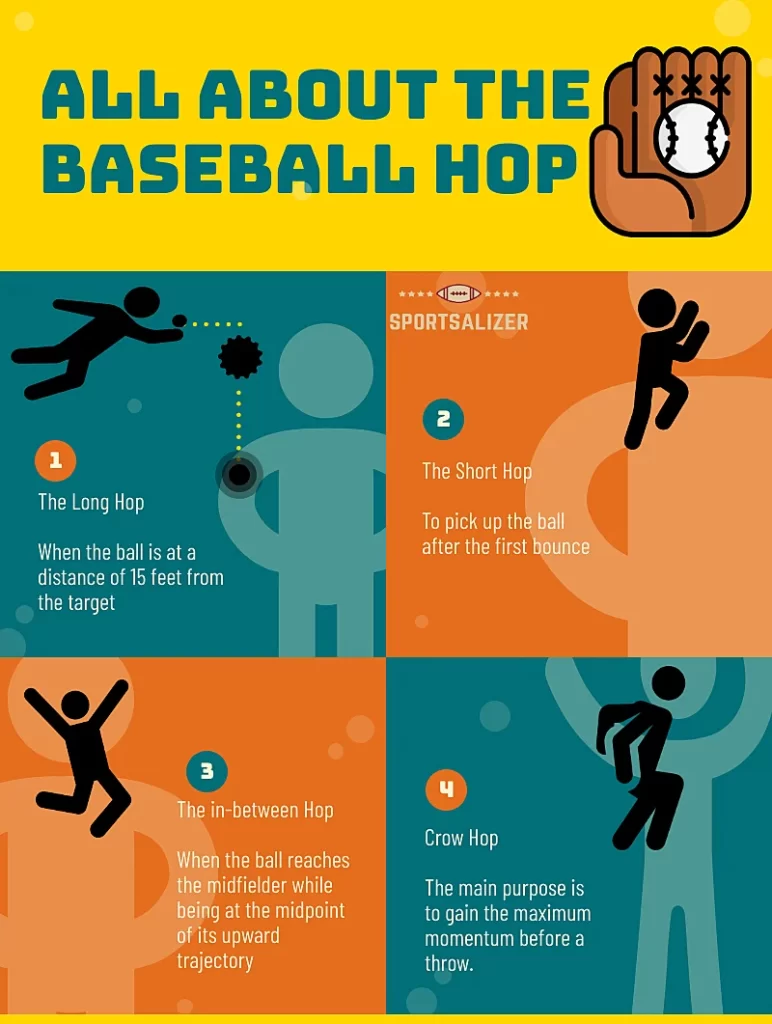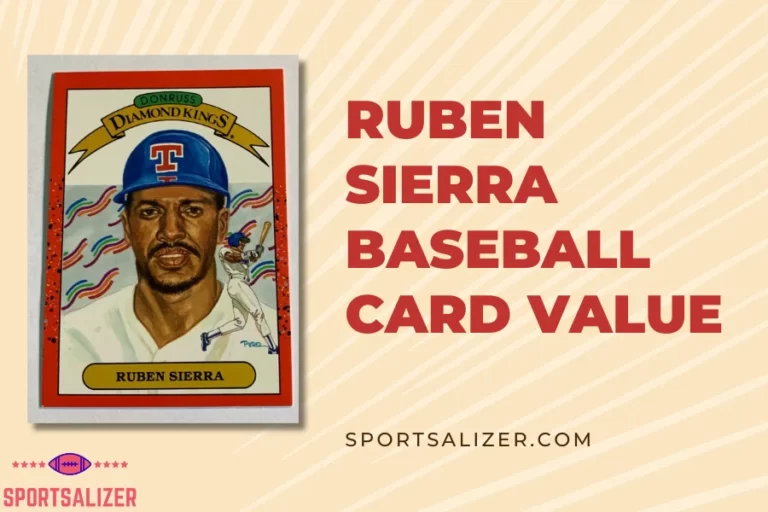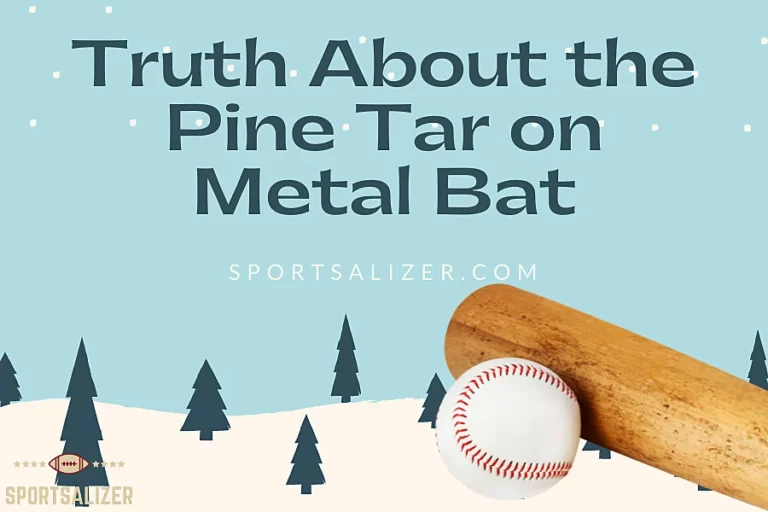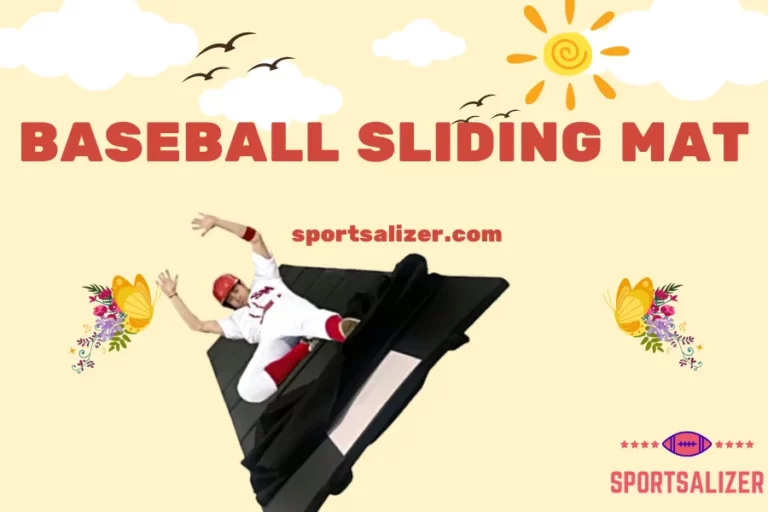Baseball Hop: Things That Were Unknown To You

All of us Baseball fans have noticed those small or long hops that the players make to be in the fielding position ideally. Yeah, that is the Baseball Hop we are talking about.
A baseball hop is the “pre-pitch” movement the “infielder generally makes.” That small jump or hop in the air allows him to get himself ready in the best possible reactionary position before the ball gets hit, and he needs to catch.
Contents
Get the Perfect Baseball Hop
Yeah, we know it sounds so easy, right? A small jump in the air to get the perfect posture!! But you know what? It is not as easy as it may seem. Also, when a kid or a young player is learning the basics of Baseball, the part which most coaching institutions neglect is the “Baseball hop.” Most of the time, the players who often grow up ignoring this minor thing face severe issues while fielding. So, how to get the baseball hop correct?
It is essential for the coaches to expressly point out the error for a lousy hop. The players must know where they went wrong and not repeat the mistake. Just referring to the movement as a “bad hop” does not help. Specific corrections are vital. A lousy hop can result from any sudden reaction or reflex, which is not necessarily an “intentional action.”
An “up hop” is one of those baseball hops’ that are mistaken mainly by young and sometimes even by professional players. Most of the time, this hop happens when the ground ball is moving “upwards” in the direction of the infielder. This ball is probably the most brutal ball to catch, and that is why players often make an error in this ball.
The best solution is to make a short hop to fix this problem. The ball becomes easy to catch in a short hop, and there is less room for error. But you know why short hop solves the problem? There is a beautiful synchronization that takes place when the player takes a short baseball hop. When a player makes an up hop to catch the ball, the eyes, and chest, due to the “gaining depth,” move in the opposite direction concerning the ball. This makes it very difficult to coordinate the ball’s timing with that of the hands, and often it’s a “missed catch.”
But, when the players make a short hop, the ball is allowed to come in the downward direction along with the movement of the eyes and chest of the player. This makes it very easy for the hands to sync with the timing of the ball and, it’s a CATCH!!

Types of Baseball Hop
You might have already noticed that we have used the term “short hop” in the above section. So what exactly is this? And if there is a short hop, is there a long one too? Well, the answer to your second question is Yes! There is. Now let us make it easy for you with the list of the hops there in Baseball.
There are three types of hop. They are as follows:
- Long Hop
- Short Hop
- In-between Hop
The Long Baseball Hop
The outfielders often make this Hop. This is done on purpose when the fielder can understand that the ball is maximum at a distance of fifteen feet from hitting the target.
The fielder can catch the ball much faster by a long hop since a more considerable distance is covered at once. This baseball hop also ensures to keep the “cut-off” man away. Like too many cooks spoil the broth, too many players in the same position, aiming for the same target often creates a misunderstanding. However, a long hop ensures that the “cut off” man does not intervene between the outfielder and the target.
This long hop also allows the throw to be more precise. When a ball is received that is pretty closer to the target, it requires a short hop, which often results in a more complicated situation to handle. A ball that gives enough time to the player to understand its trajectory and other technicalities often results in more accuracy for the fielder.
The Short Baseball Hop
This Baseball Hop is used to pick the ball after hitting the ground once and bouncing back. This often requires a minimal jump in the air to get that perfect posture necessary to get the ball in hand and throw it instantly. One thing that needs to be kept in mind in this situation is that you should control the ball and not vice versa.
There are specific drills involved to have the perfect short baseball hop. Experts often advise keeping the left foot in front while picking up the ball and not the right one. The reason behind this advice is to ensure the player’s balance is maintained while they catch the ball with their left hand and throw it with the right.
Recommended Reading | Average 60 Yard Dash: The Faster, the Better
In-between Hop
This baseball hop is most of the time the unwanted one. This term is used in the game that specifies a ball that got bounced but reaches the midfielder’s midpoint of its upward trajectory. In most cases, the players cannot respond quickly to this situation, and thus, they are always trying to avoid it.
Crow Hop
This baseball hop has a different purpose compared to the other three mentioned above. in this hop. The player makes a small jump to gain the momentum to make a powerful throw. For this hop, it isis not necessary to get high up in the air. The most important thing is creating the highest possible momentum. This can be achieved by creating a more significant “lateral distance” before throwing the ball.
This hop is advantageous to the outfielder as they have greater arm angles, which help create a more considerable momentum with all your body weight directed at a greater lateral distance in the same direction.
FAQs on Baseball Hop
How to judge the baseball hop that one needs to make?
You can just follow some simple steps to read the ball correctly. Firstly, keep your posture in the perfect fielding position and hold your hand in the outward direction. Follow the ball’s trajectory and then make the judgment for the hop you need to do.
What is an Ozzie Drill?
This is the drill that the players use when making a complicated short hop. In this, the players need to trust their gut feeling and make a move.










